There’s a moment when you’re driving through Italy that feels like magic.
It’s when the highway turns into a winding country road, the air feels different, and suddenly you’re surrounded by the smell of cypress, the sea, or fresh herbs.
This is where Italy really shows its true colors, away from the tourist crowds and into the peaceful roads that connect it all.
Driving here means ditching the rigid train schedule for the freedom to explore, stumble upon a hidden trattoria, and watch the landscape unfold at your own pace.
This guide takes you through the 10 most scenic road trips in Italy, each one offering more a chance to experience Italy like never before. If you’re looking for a memorable Italian adventure, these drives are the perfect way to find it.
Contents
- 1 The Ten Journeys: A Curated Guide to Italy’s Best Drives
- 1.1 1. The Amalfi Coast: A Drive Along the Divine Coast
- 1.2 2. Tuscany’s Heart: The Chianti Wine Road & Val d’Orcia
- 1.3 3. The Great Dolomite Road: Peaks, Passes, and Panoramas
- 1.4 4. Stelvio Pass: Conquering the Queen of Alpine Roads
- 1.5 5. Puglia’s Heel: From Trulli to Turquoise Coasts
- 1.6 6. Southeast Sicily: A Journey Through Baroque Splendor
- 1.7 7. The Lake Garda Circuit: Italy’s Grandest Lakeside Drive
- 1.8 8. Umbria: Italy’s Verdant Green Heart
- 1.9 9. The Italian Riviera: Glamour from Portofino to Cinque Terre
- 1.10 10. Basilicata’s Soul: The Ancient Road to Matera
- 2 Essential Tips for Driving in Italy
The Ten Journeys: A Curated Guide to Italy’s Best Drives
1. The Amalfi Coast: A Drive Along the Divine Coast
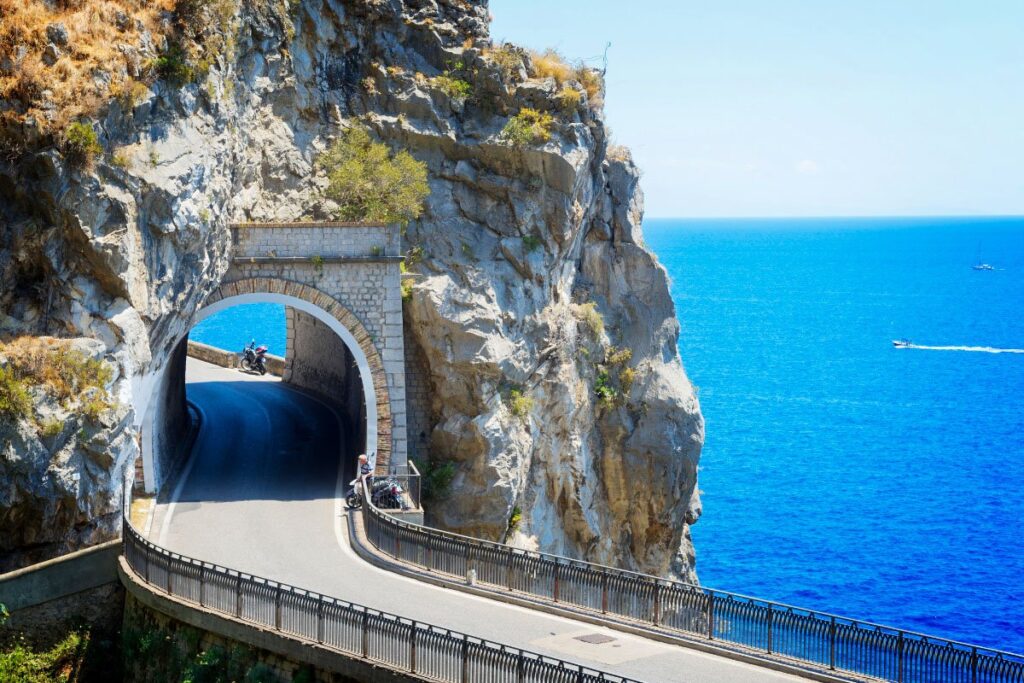
Route
Salerno to Sorrento via SS163
Distance
Approx. 75 km (46 miles)
Recommended Time
1-2 Days
Best Season
April-May, September-October
The Amalfi Drive (or Strada Statale 163) is an engineering marvel, hugging the cliffs between the sky and the Tyrrhenian Sea. A UNESCO World Heritage site, this iconic coastal route is often called one of the most beautiful drives in the world.
It kicks off in Salerno and soon reaches Vietri sul Mare, a charming town famous for its colorful, hand-painted ceramics.
From there, the road narrows, and the real magic starts. You’ll wind past grand villas and terraces of lemon groves, with every turn offering a new jaw-dropping view. Amalfi is a must-see stop, home to the impressive Cattedrale di Sant’Andrea, blending Arab-Norman style.
If you have time, take a detour inland to Ravello, a peaceful hilltop town with incredible gardens and mind-blowing views from places like Villa Cimbrone. The journey wraps up in Positano, the picturesque village where pastel-colored houses tumble down the cliffs to a beautiful bay.
For the adventurous, the drive opens up even more possibilities. Hike the famous “Path of the Gods,” or hop on a boat to explore hidden beaches and coves, like Spiaggia di Laurito.

But this drive isn’t for the faint-hearted. The roads are narrow, with sharp turns and steep drops down to the sea, making it a “white-knuckle” experience. And it gets even trickier during peak season (June to August), when the road is often packed with traffic.
To help manage the crowds, there’s a system where cars with odd-numbered plates can only drive on odd days, and those with even plates on even days. It’s definitely not a spontaneous trip; it requires planning and patience.
For a smoother ride and better views, try driving from Salerno to Sorrento, where the cliffs are on your passenger side and the sea is always in sight.
2. Tuscany’s Heart: The Chianti Wine Road & Val d’Orcia
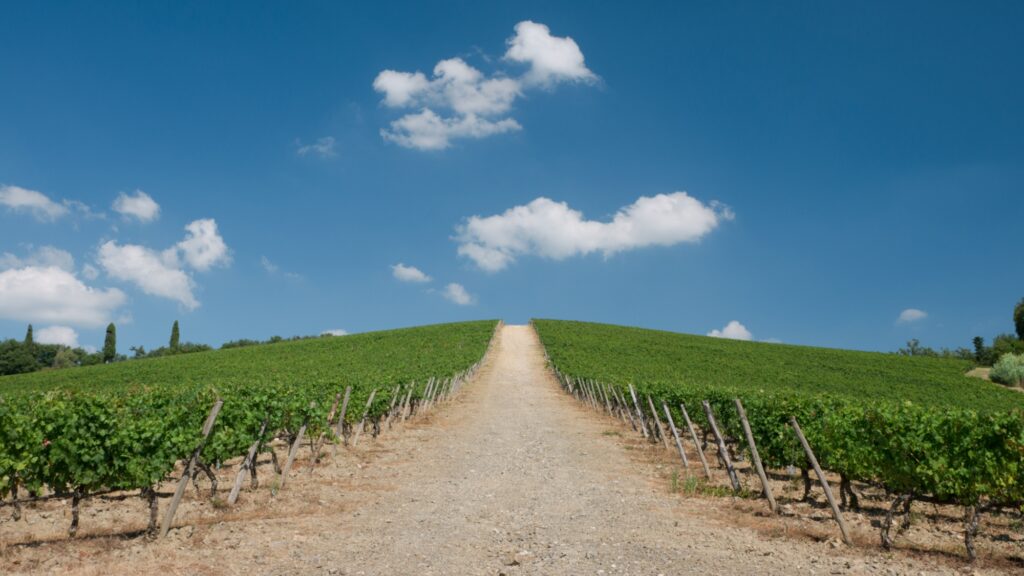
Route
Florence to Siena (SR222), extending into Val d’Orcia (Pienza, Montepulciano)
Distance
Approx. 312 km (194 miles) for a full loop
Recommended Time
3-4 Days
Best Season
May-June (spring colors), September-October (harvest)
This drive is everything you imagine when you think of Tuscany. Picture rolling hills dotted with medieval villages, long avenues of cypress trees, and vineyards and olive groves stretching out as far as the eye can see.
It starts on the SR222, also known as the Strada Chiantigiana, one of Italy’s best roads for wine lovers. This historic route connects Florence’s Renaissance beauty with Siena’s medieval charm, taking you right through the heart of the Chianti Classico wine region.
Stop in Greve in Chianti to visit the historic Enoteca Falorni for a wine tasting, and make sure to swing by Panzano, where the famous butcher Dario Cecchini serves up the region’s iconic bistecca.
As you head south of Siena, the landscape shifts into the Val d’Orcia, a UNESCO World Heritage site so breathtaking it’s been inspiring artists for centuries. Must-visit spots include Pienza, known for its Renaissance design and delicious pecorino cheese, and Montepulciano, famous for its rich Vino Nobile red wine.
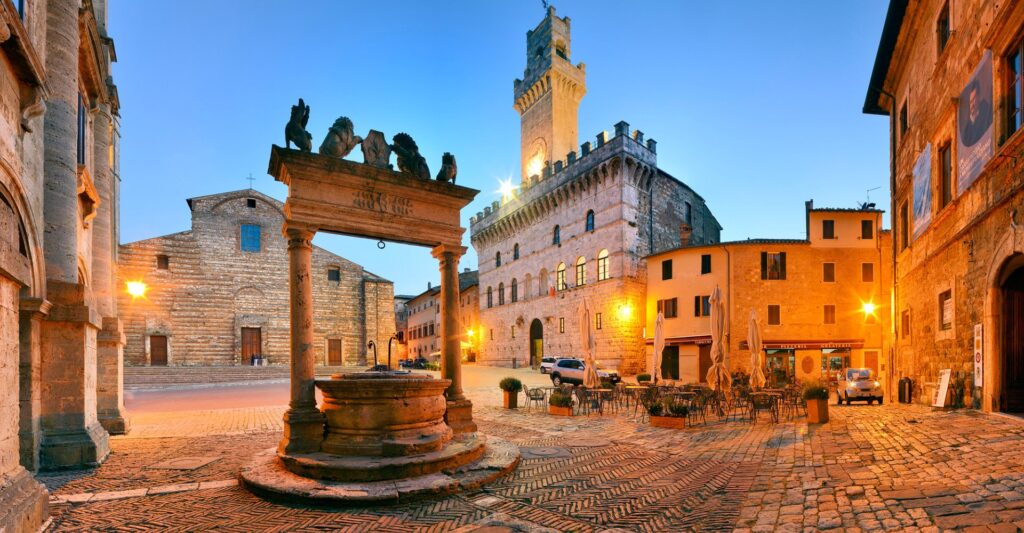
While the main roads are smooth and easy to drive, the most unforgettable views are often found on the “strade bianche” (white gravel roads) that wind through the countryside. These paths lead to hidden wineries, family-run farms, and incredible viewpoints.
Just keep an eye out for Zona Traffico Limitato (ZTL) zones, which limit car access in the historic centers of most Tuscan towns. The rule is simple: park on the edge of town and explore on foot.
The drive is stunning any time of year, but September is especially magical with the grape harvest bringing a festive vibe to the whole region.
Also See: 7 Breathtaking Train Rides in Italy That Belong on Everyone’s Bucket List
3. The Great Dolomite Road: Peaks, Passes, and Panoramas
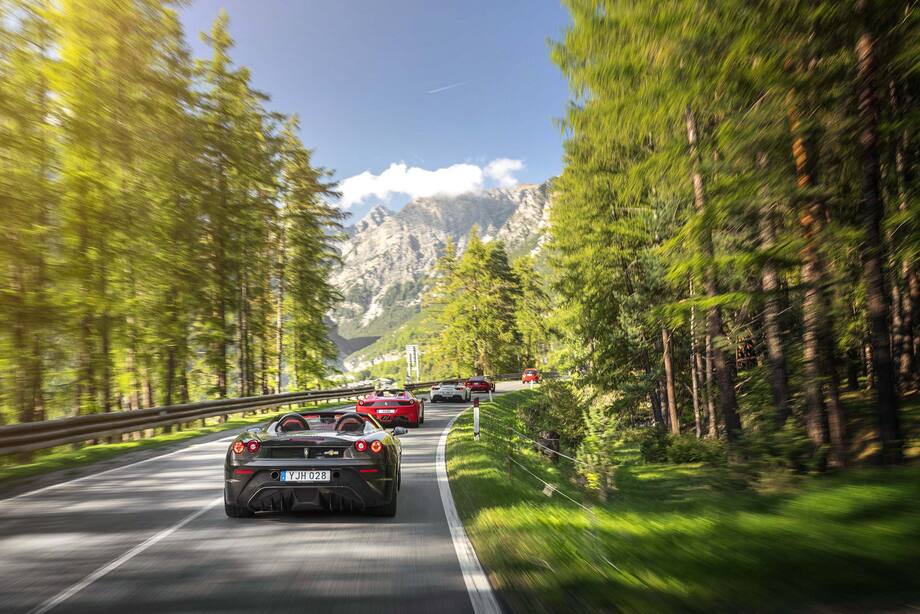
Route
Bolzano to Cortina d’Ampezzo (SS241, SS48, SR48)
Distance
Approx. 110 km (68 miles)
Recommended Time
1-2 Days
Best Season
June to mid-September
The Great Dolomite Road (or Grande Strada delle Dolomiti) takes you through an alpine wonderland where jagged limestone peaks rise up against the sky. It’s a place where Italian and Austrian cultures blend, with town names and menus often in both languages.
This route connects Bolzano in the west to the stylish ski town of Cortina d’Ampezzo in the east, passing through some of the most stunning mountain scenery in Europe.
The drive starts by winding through the Val d’Ega, a narrow valley that opens up to reveal Lago di Carezza, a beautiful emerald lake that mirrors the surrounding peaks of the Latemar and Catinaccio mountains. From here, the road climbs over high-altitude passes like Passo Pordoi and Passo Falzarego, each offering jaw-dropping panoramic views.
The real gems of this drive are often just a short walk from the car. At Passo Pordoi, hop on the cable car to Sass Pordoi, known as the “Terrace of the Dolomites.” From here, you’ll get sweeping, 360-degree views of the surrounding peaks and unique, lunar-like landscapes.
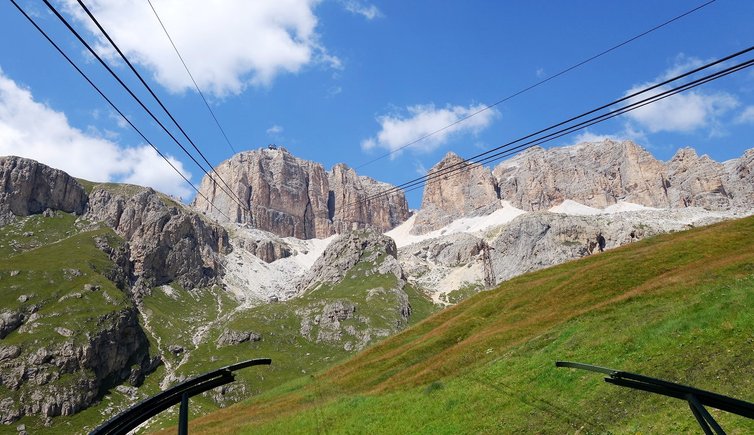
This route also leads to some amazing hiking trails, whether you’re looking for a simple walk through meadows or more challenging hikes like the circuit around the iconic Tre Cime di Lavaredo.
This is a drive best experienced in summer, as the high passes are usually open from June to mid-September, and snow can close the road the rest of the year. The drive itself may be short, but you’ll want a full day to really take it all in.
With winding switchbacks and hairpin turns, the road requires careful driving, but the landscape will slow you down anyway.
4. Stelvio Pass: Conquering the Queen of Alpine Roads
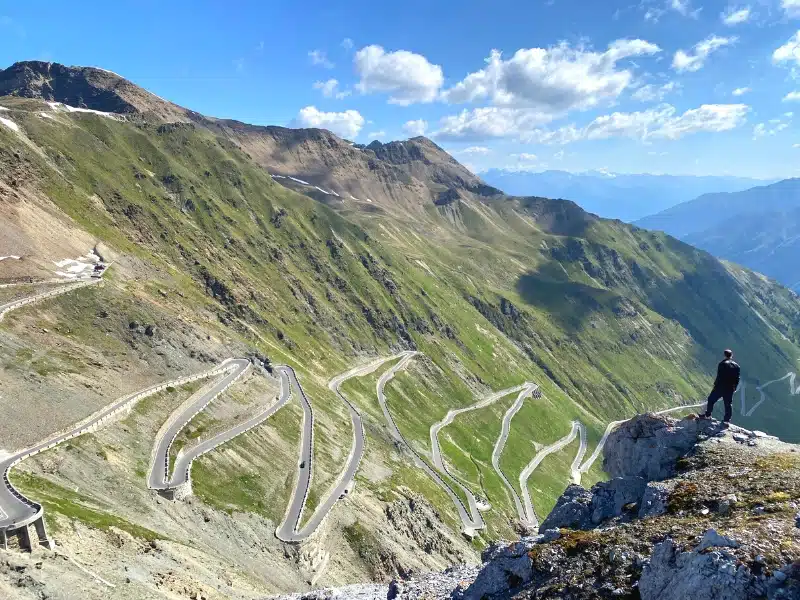
Route
Prato allo Stelvio to Bormio via SS38
Distance
Approx. 47 km (29 miles)
Distance
Half-Day (drive only)
Best Season
June to September (check road status)
Often called the “greatest driving road in the world” by shows like Top Gear, it’s become a bucket-list challenge for driving enthusiasts from all over.
But don’t think of it as a typical scenic drive. This is a pure driving test, a climb up the highest paved mountain pass in the Eastern Alps. The road, SS38, links Prato allo Stelvio in the north with Bormio in the south.
From Prato, the road climbs sharply, winding its way up the mountain with 48 hairpin turns, a jaw-dropping series of switchbacks that were an engineering marvel when they were built in the 1800s. The road zigzags its way to the summit at 2,757 meters (9,045 feet), making it one of the most challenging and dramatic drives in Italy.
However, the fame that makes Stelvio a must-do also brings its own challenges. During the short summer window (typically June to September), the pass is packed with cars, motorcycles, cyclists, and even camper vans, making that dream of a clear, high-speed drive tough to achieve.
Only experienced drivers should take this on, as the hairpins are tight and unforgiving. It’s best to drive from north to south (Prato to Bormio) to tackle those iconic switchbacks.
To avoid the crowds, aim for an early weekday morning. And before you head out, always check the road status online; it can close unexpectedly due to snow or rockfalls, even in summer.
Read: I’ve Lived in Italy for Six Years — Here Are 10 Unspoken Rules To Follow When You Visit
5. Puglia’s Heel: From Trulli to Turquoise Coasts
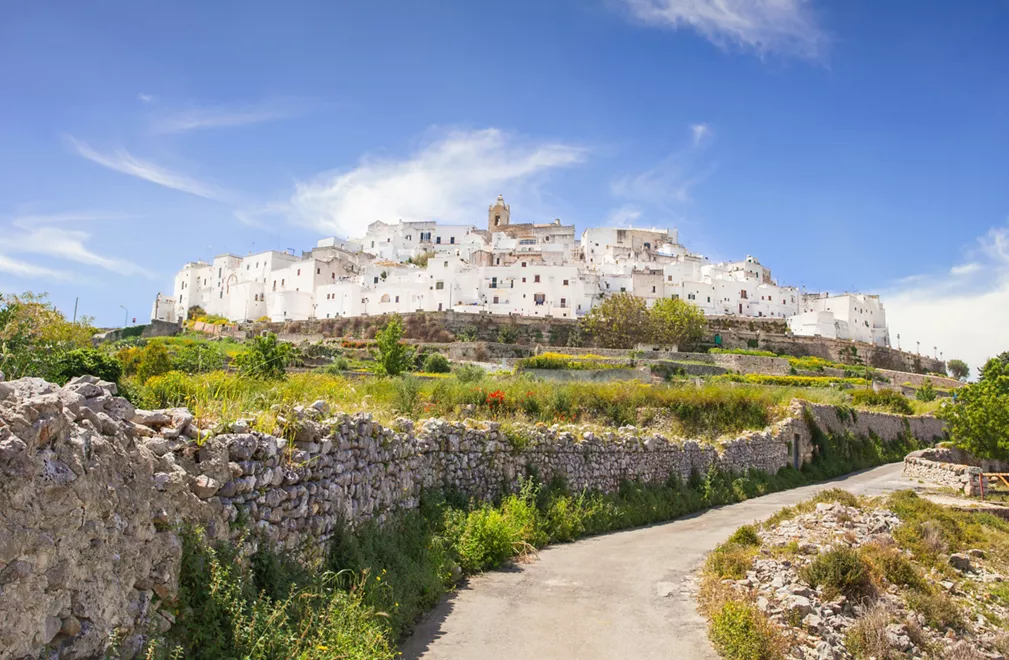
Route
Bari -> Itria Valley (Alberobello, Ostuni) -> Salento Coast
Distance
Approx. 557 km (346 miles) for a regional loop
Recommended Time
5-7 Days
Best Season
May-June, September
A road trip through Puglia is like stepping into the sun-soaked “heel of Italy’s boot,” where ancient olive groves, charming whitewashed towns, and a coastline that touches two seas await.
This drive itself takes you through some of its most iconic sights. The journey begins near Bari and heads inland to the Valle d’Itria, a dreamy landscape filled with trulli, those famous conical-roofed huts you’ll find in Alberobello. These little stone buildings tell the story of the region’s agricultural past and the ingenuity of its people.
As you drive on, you’ll pass through picturesque towns like Ostuni, the “White City,” perched on a hill with views over the Adriatic, and Locorotondo, a charming village with circular streets. From there, head south to the Salento Peninsula, where the dramatic coastline and rich history really steal the show.
Here, the baroque beauty of Lecce, called the “Florence of the South,” adds a touch of urban elegance. The coastal roads lead you to stunning seaside towns like Polignano a Mare, perched on limestone cliffs, and beautiful beaches like Pescoluse, or the “Maldives of Italy.”
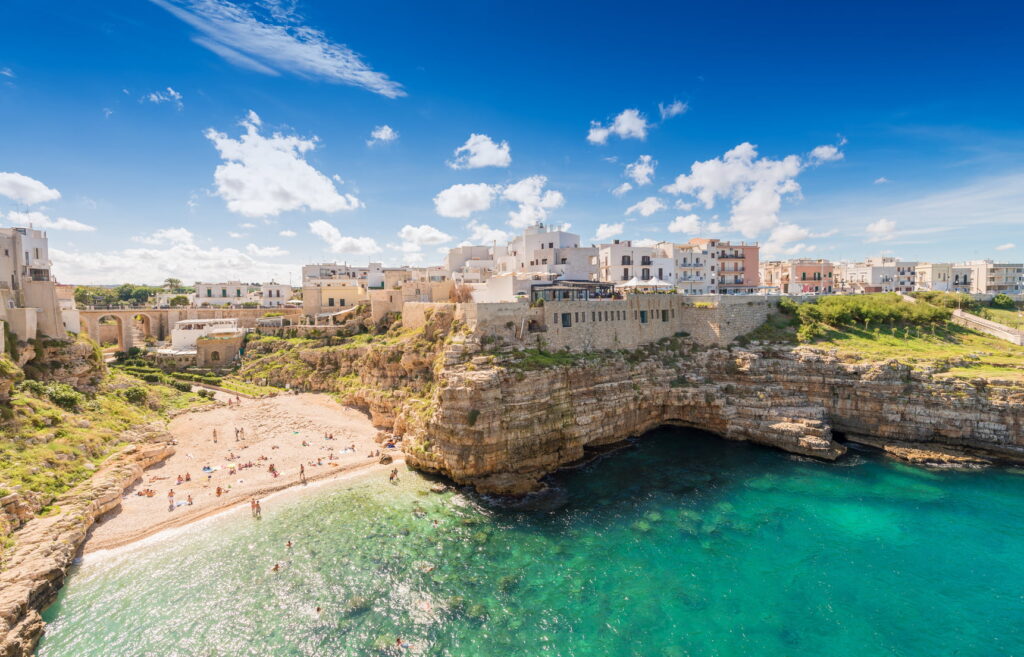
Driving in Puglia is much more laid-back compared to the busy, mountain roads of other parts of Italy. The roads are flatter and less crowded, though you’ll still want a small car to navigate the narrow, winding streets of the ancient town centers.
A true Puglian experience includes staying in a masseria, a historic, fortified farmhouse that’s been turned into a guesthouse or hotel. Surrounded by olive groves and vineyards, these estates make for the perfect base to explore the region’s unique charm.
Also See: 10 Rookie Mistakes Tourists Make in Italy (And how to Avoid Them)
6. Southeast Sicily: A Journey Through Baroque Splendor
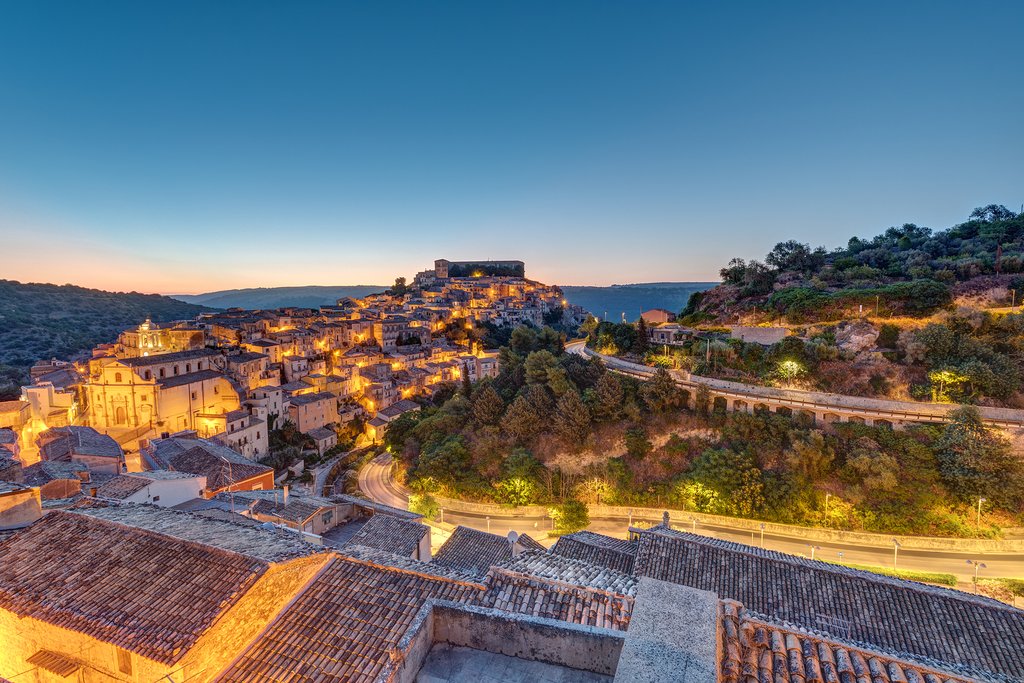
Route
Catania -> Siracusa -> Val di Noto (Noto, Modica, Ragusa) -> Catania
Distance
Approx. 346 km (215 miles)
Recommended Time
4-5 Days
Best Season
April-June, September-October
This road trip through Sicily takes you on a journey through a landscape that’s as beautiful as it is resilient. You’ll explore the Val di Noto, a group of towns in the island’s southeast that were almost completely destroyed by a massive earthquake in 1693 and then rebuilt in the stunning, dramatic Baroque style.
The trip usually starts in Catania, a lively city sitting at the foot of the mighty Mount Etna. From there, you’ll head south along the coast to Siracusa, once one of the most powerful cities in the Greek world.
The heart of Siracusa is Ortigia, a small island full of winding alleys, sea views, and sunlit piazzas that will make you feel like you’ve stepped back in time.
After that, you’ll head inland to the Val di Noto, where the town of Noto steals the show with its honey-colored Baroque buildings that glow in the afternoon sun. The drive continues to Modica, which is famous not just for its unique tiered streets but also for its Aztec-inspired chocolate.
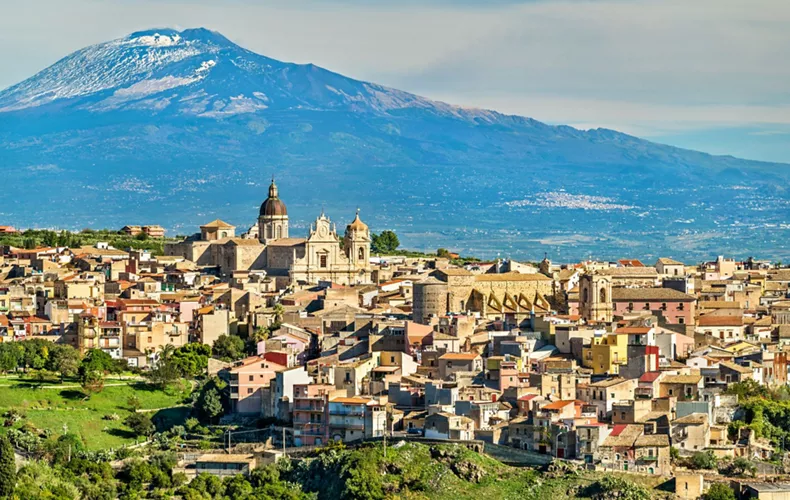
Finally, you’ll reach Ragusa Ibla, a beautiful town perched on a hilltop that feels like it’s from a storybook. For a bit of nature to balance out all the history, take a detour to the slopes of Mount Etna, Europe’s most active volcano.
Also Read: This Ancient Italian Hilltop Town in Sicily Feels Like a Dream You Never Forget
Driving through Sicilian cities like Catania can be a bit intense, with the chaotic traffic that requires some extra patience, but once you get out into the countryside, the roads are much more relaxed. Like most historic Italian towns, the centers are ZTLs (limited traffic zones), so parking on the outskirts and walking into town is the best way to explore.
7. The Lake Garda Circuit: Italy’s Grandest Lakeside Drive
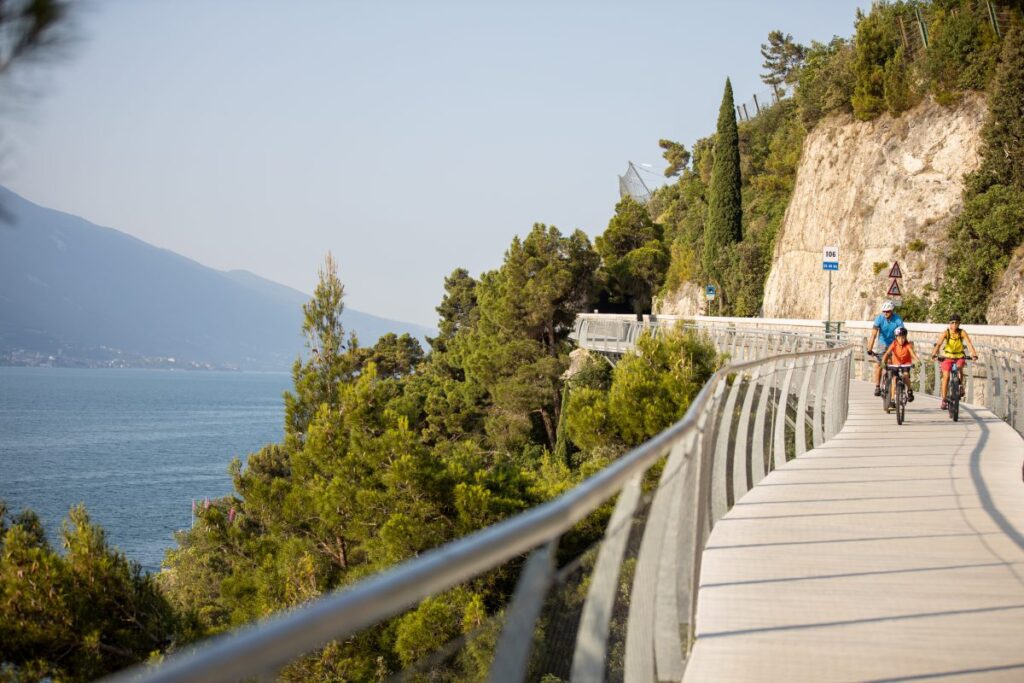
Route
Full loop around Lake Garda (e.g., Sirmione -> Salò -> Riva -> Malcesine -> Sirmione)
Distance
Approx. 150 km (93 miles)
Recommended Time
2-3 Days
Best Season
May-June, September
A road trip around Lake Garda is like driving through two completely different worlds, each one showcasing Italy’s amazing diversity in one stunning loop.
As the country’s largest lake, Lake Garda changes personality at every twist and turn. The southern shores feel unmistakably Mediterranean, with rolling hills, olive groves, and wide, sun-soaked promenades. Towns like Sirmione, with its moated Castello Scaligero and ancient Roman ruins, capture that perfect lakeside charm.
As you drive north along the Gardesana road, the landscape shifts dramatically. The lake narrows, and soon you’ll find yourself surrounded by towering mountains that seem to plunge straight into the water, creating a fjord-like feel.
The western side, known as the Gardesana Occidentale, has tunnels carved into cliffs that make the drive feel like an adventure in itself. One of the highlights here is the Strada della Forra, a narrow, winding road up a gorge that was even featured in a James Bond film.
At the northern tip of the lake, towns like Riva del Garda make you feel like you’ve entered an alpine wonderland, with windsurfing and mountain biking drawing visitors from all over. The eastern side offers another perspective, with Malcesine and its castle being the perfect spot to take a cable car ride up Monte Baldo for the most jaw-dropping views of the lake.
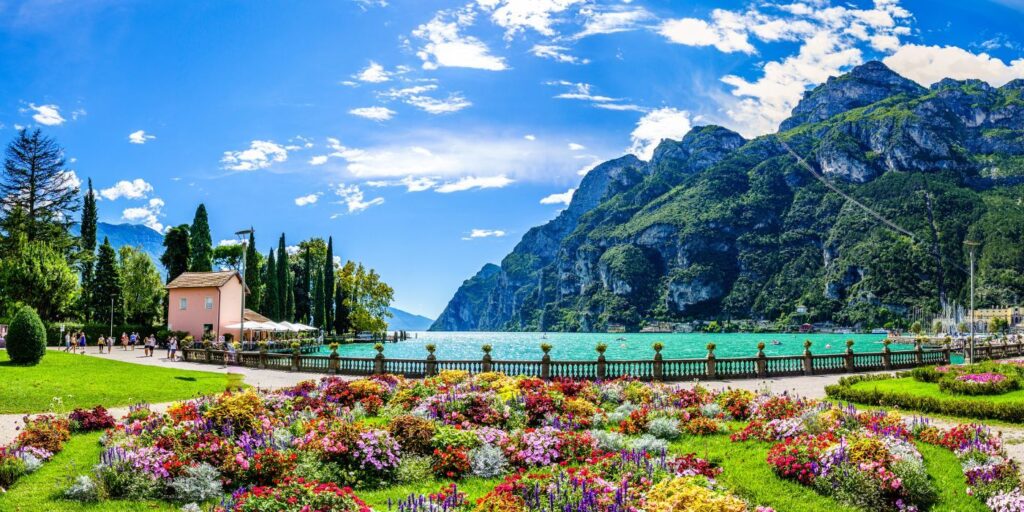
This drive takes you through a range of climates and cultures in a surprisingly small area, making it feel like a cross-country trip, but in just one day. The main road is generally in good shape, though it can get a little tight and crowded, especially on summer weekends.
One important thing to keep in mind is that the Strada della Forra, a fan favorite, has had some recent changes. After a landslide in late 2023, part of the road became permanently one-way (uphill) starting in August 2025, so definitely check the latest road status before taking that detour.
8. Umbria: Italy’s Verdant Green Heart
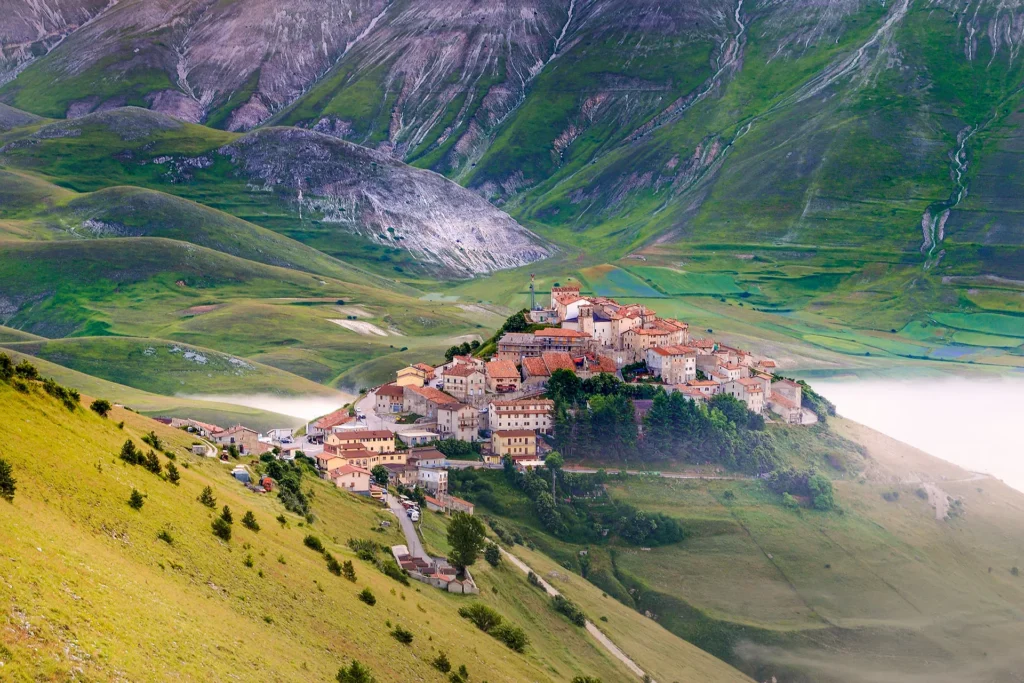
Route
Perugia -> Assisi -> Spello -> Todi -> Orvieto
Distance
Approx. 220 km (137 miles)
Recommended Time
4-5 Days
Best Season
May-June, September
While Tuscany often steals the spotlight, Umbria offers a quieter, more authentic road trip experience.
Known as “the green heart of Italy,” this peaceful, landlocked region is a patchwork of rolling hills, dense forests, and ancient hilltop towns that feel like they’ve hardly changed over the centuries.
The journey takes you through a mix of medieval and Etruscan gems. You can start in Perugia, the lively capital, and then head to Assisi, the birthplace of St. Francis, which feels almost sacred. The Basilica di San Francesco is a must-see, both for its incredible medieval art and its peaceful, spiritual atmosphere.
A short drive away, Spello is a charming town with flower-lined streets and the famous Infiorata flower carpet festival every summer. As you continue south, you’ll pass through hilltop towns like Todi and end in Orvieto, a city perched on a volcanic rock with one of Italy’s most stunning Gothic cathedrals.
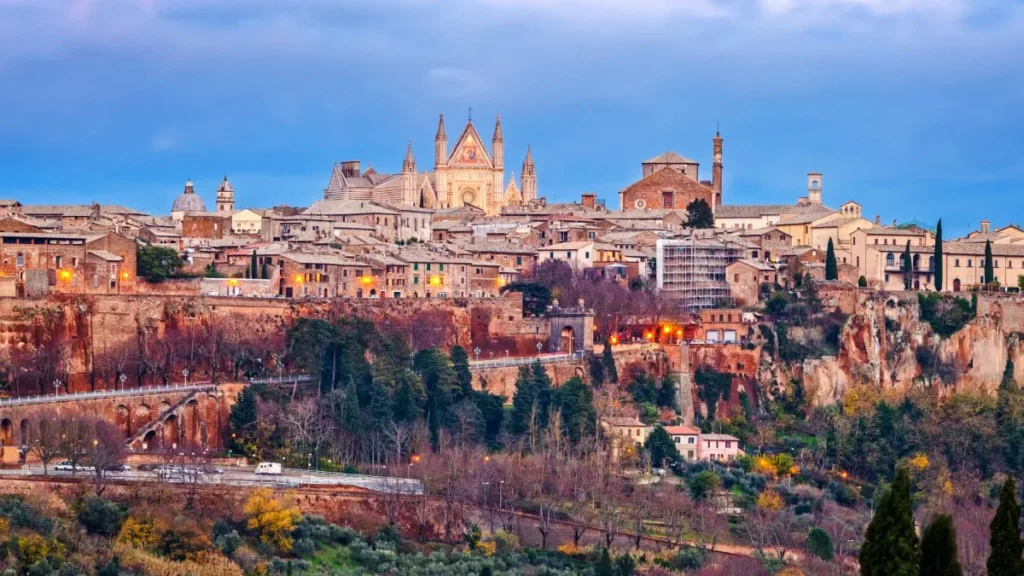
The roads are quieter, which makes it perfect for taking detours to find tiny, hidden villages, sip local wines like Sagrantino, or even try truffle hunting in the forests near Trevi.
Like in Tuscany, a small car is a must for navigating the narrow, ancient streets, and parking is usually outside the historic centers.
9. The Italian Riviera: Glamour from Portofino to Cinque Terre
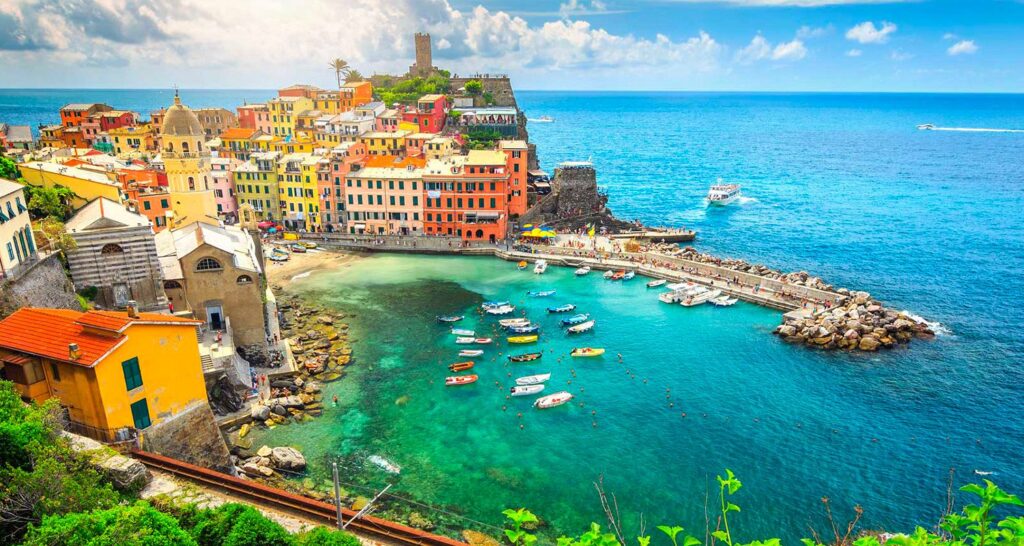
Route
La Spezia -> Cinque Terre -> Portofino -> Genoa
Distance
Approx. 302 km (188 miles) for a full coastal exploration
Recommended Time
3-4 Days (using a base)
Best Season
May, September
The Italian Riviera in Liguria is like something straight out of a postcard: glamorous harbors, pastel-colored villages, and cliffs that tumble right into the turquoise sea. A car isn’t always the best way to get around. Instead, you’ll need to mix driving with taking trains and ferries to really experience it all.
The journey usually starts near La Spezia, which is the gateway to the Cinque Terre. These five picturesque villages—Monterosso al Mare, Vernazza, Corniglia, Manarola, and Riomaggiore—are a UNESCO World Heritage site and absolutely breathtaking.
However, driving into these villages is a no-go due to strict rules and limited parking. The best way to explore is to park in nearby towns like La Spezia or Levanto and then hop on the local train, which connects all five villages in just minutes.
The famous Sentiero Azzurro (Blue Trail) links the villages for some epic hikes, but be aware that parts of it close now and then due to landslides. The iconic Via dell’Amore trail just reopened in 2024, but it requires a pre-booked ticket, so it’s a good idea to check the park’s website before you go.
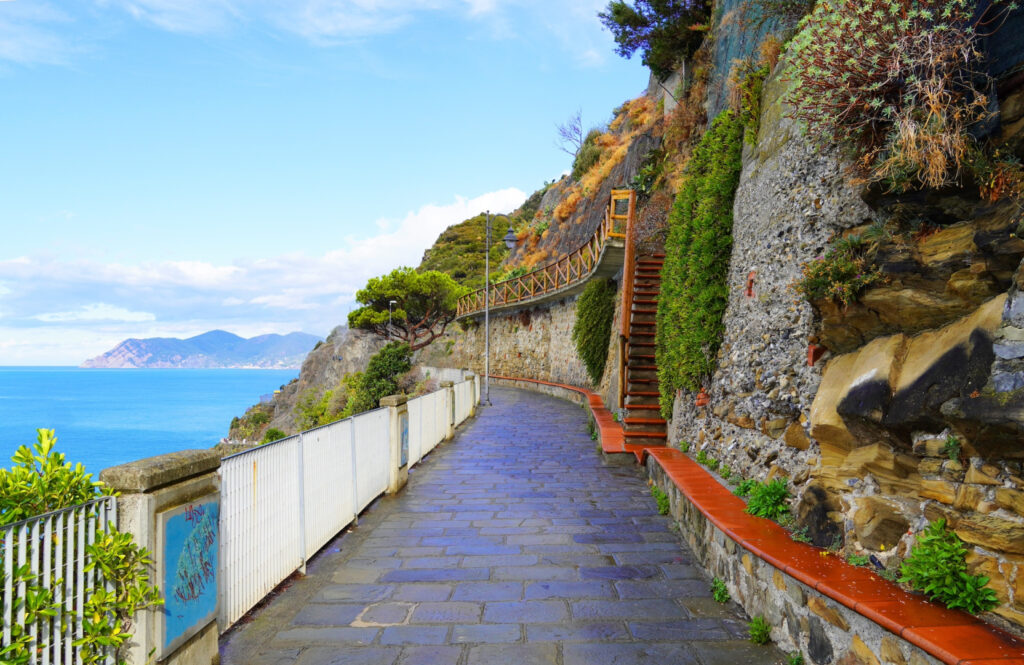
From the Cinque Terre, the road trip continues north along the coast. Here, your car will be useful again as you head toward the Portofino Peninsula. Santa Margherita Ligure makes a great base for exploring the super-chic harbor of Portofino and the peaceful abbey of San Fruttuoso.
To avoid the hassle of traffic and parking, you can take a short ferry ride to these places, which is part of the fun..
10. Basilicata’s Soul: The Ancient Road to Matera
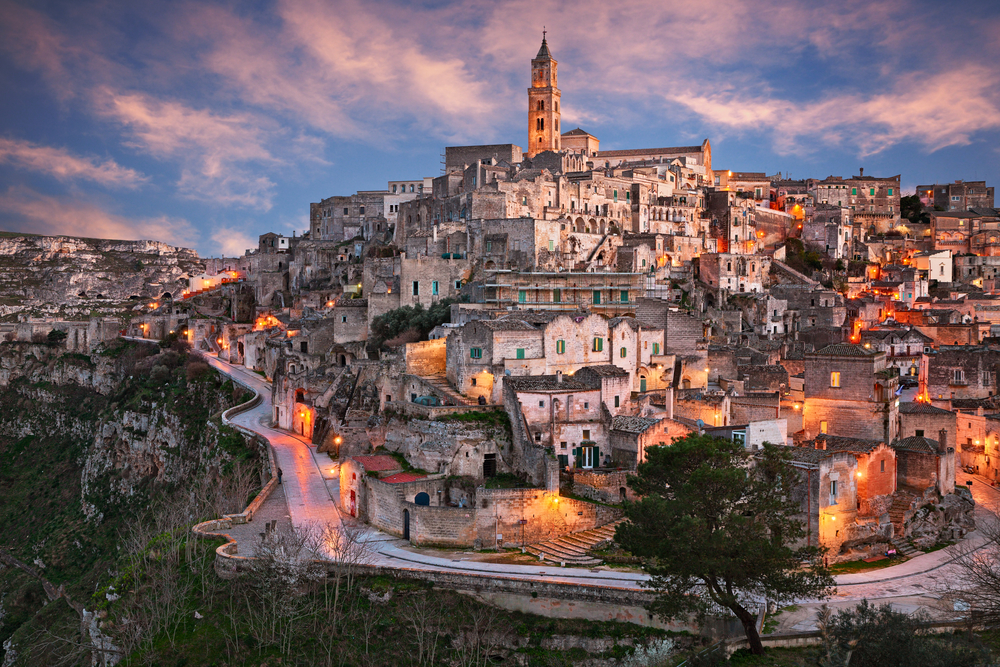
Route
From Bari (Puglia) or inland through Basilicata via Castelmezzano
Distance
Varies (approx. 65 km / 40 miles from Bari)
Recommended Time
2-3 Days (including Matera exploration)
Best Season
April-June, September-October
This road trip feels like stepping back in time, taking you from the present into one of the oldest and most fascinating urban landscapes in the world.
Your final destination is Matera, a UNESCO World Heritage site in the remote region of Basilicata. Famous for its Sassi, an ancient network of cave dwellings carved into the rock and inhabited since the Paleolithic era, Matera is a place unlike any other.
One route begins in Bari and takes you across the flat plains of Puglia before entering the dramatic landscape of Basilicata.
If you’re up for an adventure, you can take a more rugged path through the Lucanian Dolomites, where the villages of Castelmezzano and Pietrapertosa are perched on steep rock spires, facing each other across a deep gorge.

You can even zip across the gorge on the Volo dell’Angelo (Flight of the Angel), a high-speed zipline that gives you a bird’s-eye view of the stunning scenery.
Once you reach Matera, your car becomes unnecessary. The historic Sassi districts are car-free zones, so you’ll need to park at one of the designated lots on the edge of the town (like the one on Via Saragat) and explore the labyrinth of stone alleys and stairways on foot. It’s easy to get lost here, which is part of the charm. GPS won’t help much in this maze!
Essential Tips for Driving in Italy
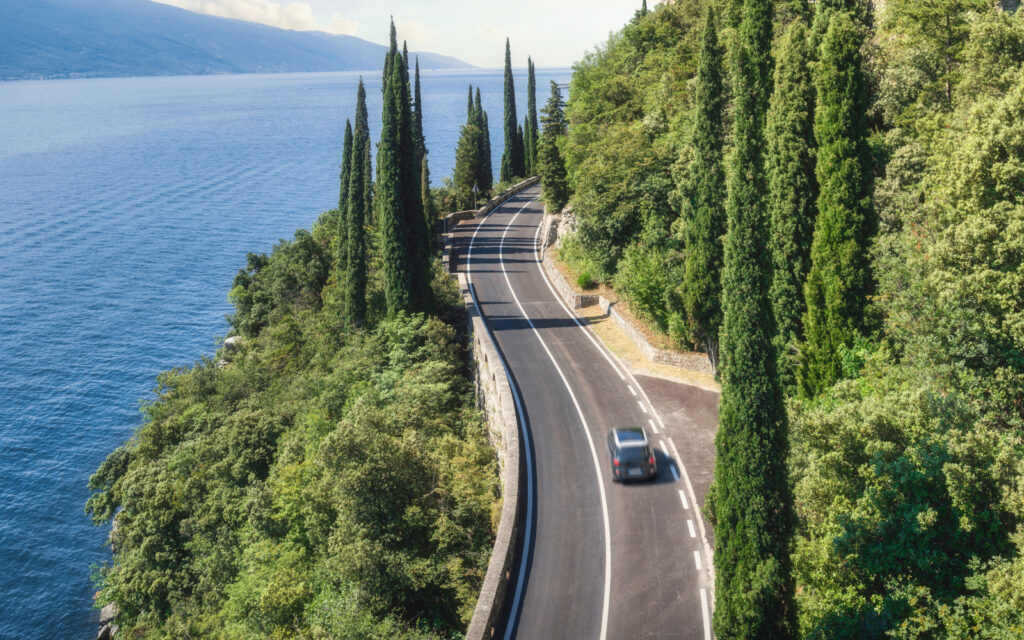
If you’re planning to hit the road on any of Italy’s beautiful scenic routes, it’s helpful to understand a few key things about driving there. Knowing the local rules and quirks will help make your journey smoother.
ZTLs (Zona Traffico Limitato)
This is probably the most important thing to remember. Most Italian cities and towns have areas called Zona Traffico Limitato, or ZTL. These zones are basically car-free areas, often in historic town centers.
You’ll spot a sign with a red circle around a white background, and entering one of these zones (even by accident) will trigger a camera that records your license plate.
The fine will be sent to you later, often through the rental company, sometimes months later! So, if you see a ZTL sign, just park outside the zone and walk in.
Autostrade (Toll Roads)
Italy’s highways, known as autostrade, are toll roads. When you get on, you’ll grab a ticket from an automated machine, and then pay at a toll booth when you exit. You can pay with cash or a credit card.
Look for lanes that show a credit card symbol or a cash sign. Avoid the “Telepass” lanes, which are for electronic pass users. Though tolls add to your trip cost, the autostrade are well-maintained and can save you loads of time compared to winding country roads.
Parking
Parking in Italy can be a bit tricky, but here’s the breakdown:
- White lines mean free parking, though there may be time limits.
- Blue lines mean you need to pay, either at a meter or via a mobile app.
- Yellow lines are for residents or people with special permits; avoid these!
In bigger towns and cities, parking garages (parcheggio) outside the ZTL are often your best bet for a stress-free experience.
Driving Style and Car Rental
Italian drivers, especially in cities and in the south, can be a bit more assertive (and fast!) than what you might be used to.
Stay in the right lane unless overtaking, and don’t stress. When renting a car, it’s always a good idea to go for a smaller vehicle. Narrow streets, tight parking spots, and winding roads will be much easier to navigate in a compact car.
Keep these tips in mind, and you’ll be ready for whatever the Italian roads throw your way. Safe travels!
From the snow-capped peaks of the Dolomites to the sun-kissed beaches of Sicily, Italy is a land of stunning variety, and there’s no better way to explore it than by car. It’s time to stop imagining the perfect Italian getaway and start planning it.